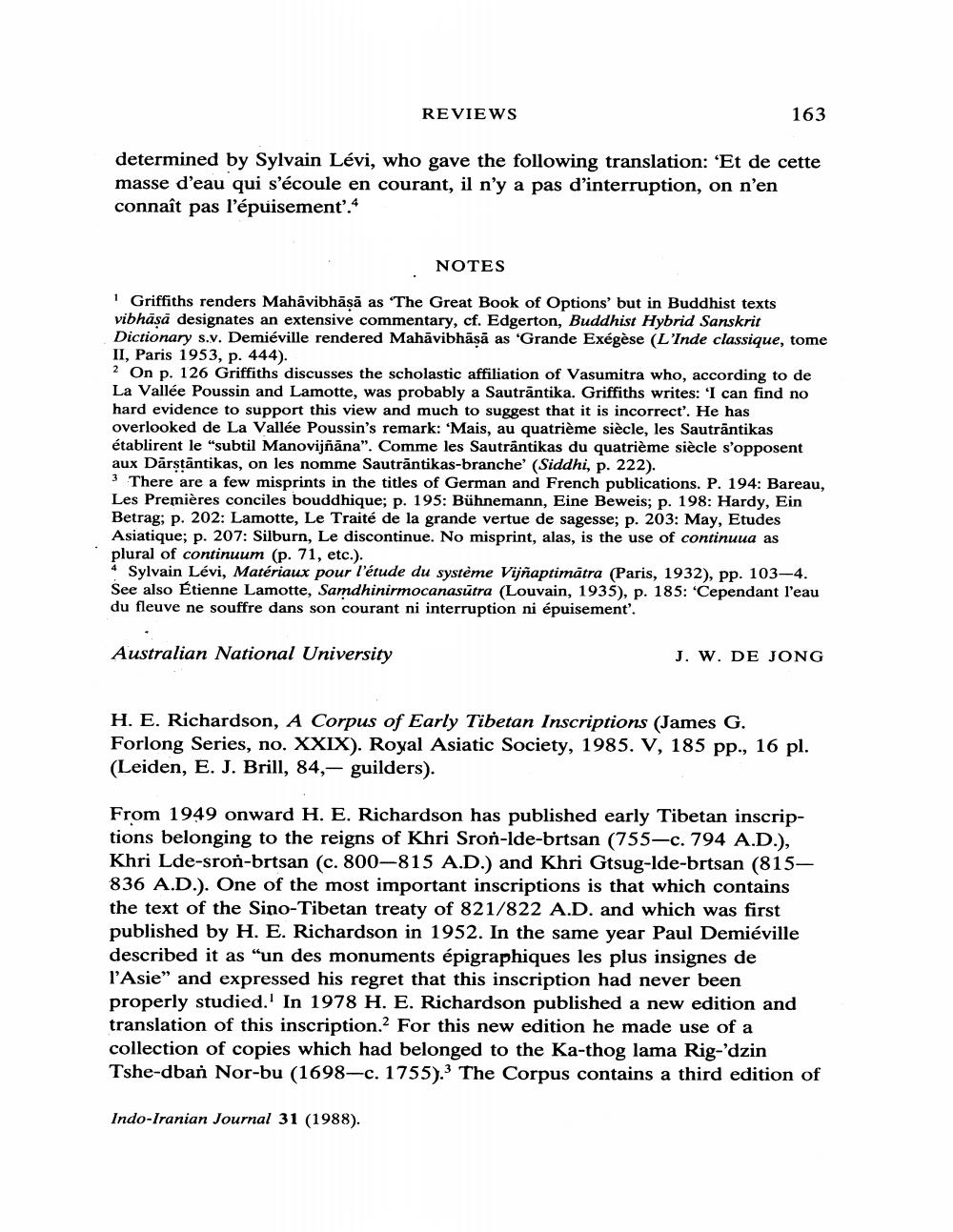________________
REVIEWS
163
determined by Sylvain Lévi, who gave the following translation: 'Et de cette masse d'eau qui s'écoule en courant, il n'y a pas d'interruption, on n'en connaît pas l'épuisement'.
NOTES
I Griffiths renders Mahāvibhāsā as The Great Book of Options' but in Buddhist texts vibhāså designates an extensive commentary, cf. Edgerton, Buddhist Hybrid Sanskrit Dictionary s.y. Demiéville rendered Mahāvibhāsā as 'Grande Exégèse (L'Inde classique, tome II, Paris 1953, p. 444). 2 On p. 126 Griffiths discusses the scholastic affiliation of Vasumitra who, according to de La Vallée Poussin and Lamotte, was probably a Sautrāntika. Griffiths writes: 'I can find no hard evidence to support this view and much to suggest that it is incorrect'. He has overlooked de La Vallée Poussin's remark: 'Mais, au quatrième siècle, les Sautrāntikas établirent le "subtil Manovijñāna". Comme les Sautrántikas du quatrième siècle s'opposent aux Dārstāntikas, on les nomme Sautrāntikas-branche' (Siddhi, p. 222). 3 There are a few misprints in the titles of German and French publications. P. 194: Bareau, Les Premières conciles bouddhique; p. 195: Bühnemann, Eine Beweis; p. 198: Hardy, Ein Betrag; p. 202: Lamotte, Le Traité de la grande vertue de sagesse; p. 203: May, Etudes Asiatique; p. 207: Silburn, Le discontinue. No misprint, alas, is the use of continuua as plural of continuum (p. 71, etc.). 4 Sylvain Lévi, Matériaux pour l'étude du système Vijnaptimätra (Paris, 1932), pp. 103-4. See also Étienne Lamotte, Samdhinirmocanasūtra (Louvain, 1935), p. 185: 'Cependant l'eau du fleuve ne souffre dans son courant ni interruption ni épuisement'.
Australian National University
J. W. DE JONG
H. E. Richardson, A Corpus of Early Tibetan Inscriptions (James G. Forlong Series, no. XXIX). Royal Asiatic Society, 1985. V, 185 pp., 16 pl. (Leiden, E. J. Brill, 84,- guilders).
From 1949 onward H. E. Richardson has published early Tibetan inscriptions belonging to the reigns of Khri Sron-ide-brtsan (755-c. 794 A.D.), Khri Lde-sron-brtsan (c. 800-815 A.D.) and Khri Gtsug-lde-brtsan (815– 836 A.D.). One of the most important inscriptions is that which contains the text of the Sino-Tibetan treaty of 821/822 A.D. and which was first published by H. E. Richardson in 1952. In the same year Paul Demiéville described it as "un des monuments épigraphiques les plus insignes de l'Asie” and expressed his regret that this inscription had never been properly studied. In 1978 H. E. Richardson published a new edition and translation of this inscription. For this new edition he made use of a collection of copies which had belonged to the Ka-thog lama Rig-'dzin Tshe-dban Nor-bu (1698-c. 1755). The Corpus contains a third edition of
Indo-Iranian Journal 31 (1988).




